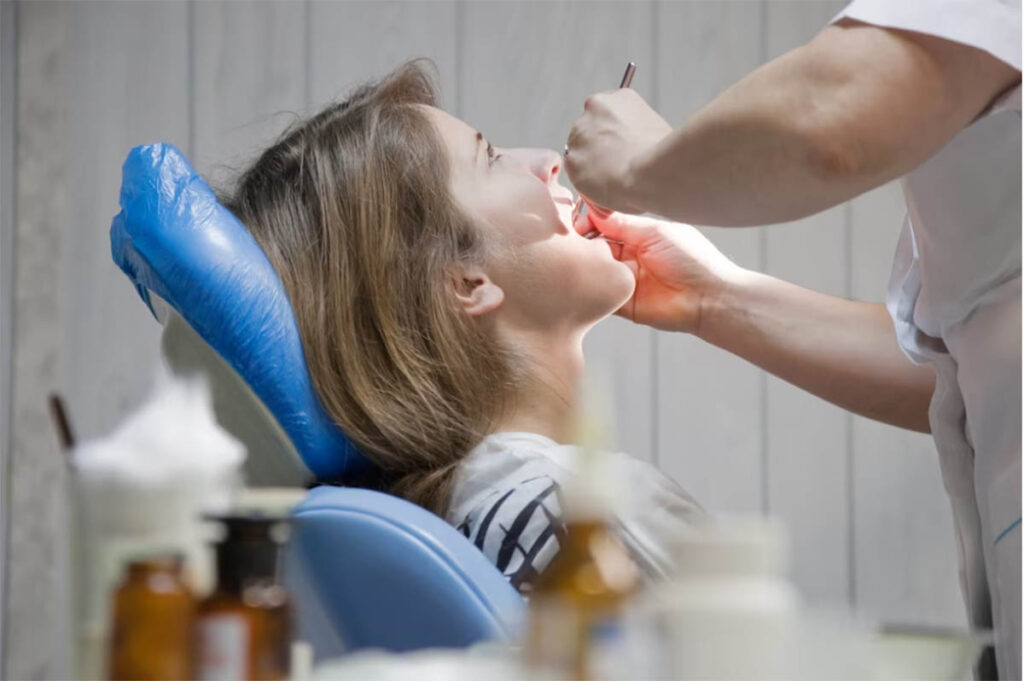Introduction
The temporomandibular joint (TMJ) is a vital joint that connects the jawbone (mandible) to the skull’s temporal bone, allowing us to perform essential functions such as chewing, talking, and yawning. However, this intricate joint is susceptible to disorders that can cause pain and discomfort. TMJ jaw disorder, also known as temporomandibular joint disorder (TMD), affects millions of people worldwide. In this comprehensive article, we will explore the causes, symptoms, diagnosis, treatment options, and management strategies for TMJ jaw disorder.
Section 1: Anatomy of the TMJ
The TMJ is a complex joint with a unique structure and function. It comprises several components, including:
- Temporal Bone: This is part of the skull where the joint attaches.
- Mandible: The lower jawbone that articulates with the temporal bone to form the joint.
- Articular Disc: A fibrous cartilage disc that lies between the temporal bone and mandible, acting as a cushion and facilitating smooth movement.
- Muscles: Various muscles around the joint, including the muscles of mastication (chewing muscles), which play a role in jaw movement.
Section 2: Common Causes of TMJ Jaw Disorder
TMJ jaw disorder can result from various factors, including:
- Misalignment or Malocclusion: Abnormalities in the bite, such as an overbite or underbite, can strain the TMJ.
- Bruxism: The habit of teeth grinding or clenching, especially during sleep, can lead to TMJ issues.
- Trauma or Injury: A direct impact to the jaw or joint can cause damage to the TMJ structures.
- Arthritis: Inflammatory conditions like rheumatoid arthritis or osteoarthritis can affect the TMJ.
- Stress: Emotional stress can lead to unconscious clenching or grinding of teeth, putting strain on the TMJ.
- Poor Posture: Chronic poor posture can affect the alignment of the spine and jaw, leading to TMJ problems.
- Dental Procedures: Prolonged mouth opening during dental treatments can strain the TMJ.
Section 3: Symptoms of TMJ Jaw Disorder

TMJ jaw disorder can manifest in various ways, with symptoms including:
- Jaw Pain: Dull, aching pain in the jaw joint or surrounding areas.
- Clicking or Popping: Audible noises, like clicking or popping, when opening or closing the mouth.
- Limited Jaw Movement: Difficulty fully opening or closing the mouth.
- Facial Pain: Pain or discomfort in the face, ears, neck, or shoulders.
- Headaches: Frequent headaches, especially in the temples or behind the eyes.
- Ear Pain or Tinnitus: Pain in the ears or ringing sensation (tinnitus).
- Facial Swelling: Swelling or tenderness around the jaw joint.
- Jaw Locking: Temporary locking of the jaw in an open or closed position.
Section 4: Diagnosing TMJ Jaw Disorder
Diagnosing TMJ jaw disorder involves a comprehensive evaluation, including:
- Medical History: The healthcare provider will inquire about the patient’s symptoms, medical history, and any recent jaw injuries or dental procedures.
- Physical Examination: A thorough examination of the jaw, facial muscles, and joint movements.
- Imaging Studies: X-rays, MRI, or CT scans may be conducted to visualize the TMJ’s internal structures and detect any abnormalities or injuries.
- Dental Assessment: The dentist or orthodontist will evaluate the bite and alignment of the teeth.
Section 5: Treatment Options for TMJ Jaw Disorder

Treatment for TMJ jaw disorder aims to relieve pain, improve jaw function, and address the underlying cause. Common treatment options include:
- Self-Care Measures: Avoiding hard or chewy foods, applying warm or cold compresses, and practicing relaxation techniques to manage stress.
- Medications: Over-the-counter pain relievers, muscle relaxants, or anti-inflammatory drugs to alleviate pain and inflammation.
- Dental Splints or Mouthguards: Custom-made devices to protect the teeth from grinding or clenching.
- Physical Therapy: Targeted exercises and stretches to strengthen jaw muscles and improve range of motion.
- Dental Adjustments: Orthodontic treatments or dental adjustments to correct bite issues.
- Transcutaneous Electrical Nerve Stimulation (TENS): A therapy that uses low-level electrical currents to reduce pain and relax muscles.
- Injections: Corticosteroid injections into the TMJ for severe pain and inflammation.
- Surgery: In rare cases when conservative treatments fail, surgical options such as arthrocentesis or arthroscopy may be considered.
Section 6: Management and Prevention of TMJ Jaw Disorder
Managing and preventing TMJ jaw disorder involves lifestyle modifications and self-care strategies:
- Jaw Exercises: Regularly perform jaw exercises and stretches recommended by a healthcare professional.
- Stress Management: Practice stress-reducing techniques, such as meditation, yoga, or deep breathing exercises.
- Good Posture: Maintain proper posture to reduce strain on the jaw and spine.
- Avoiding Extreme Jaw Movements: Limit excessive yawning, gum chewing, and wide mouth openings.
- Soft Diet: Choose soft foods and avoid excessively hard or chewy items.
- Avoiding Teeth Clenching and Grinding: Wear a mouthguard at night if teeth grinding or clenching is a problem.
- Regular Dental Checkups: Regular visits to the dentist can help identify and address potential dental issues that may contribute to TMJ jaw disorder.
Conclusion
TMJ jaw disorder is a common condition that can cause significant pain and discomfort. Understanding the causes, symptoms, diagnosis, treatment options, and management strategies for TMJ jaw disorder is essential for effective relief and prevention. Early intervention, proper diagnosis, and adherence to recommended treatments can greatly improve the patient’s quality of life. By adopting self-care measures, managing stress, and seeking timely medical attention when needed, individuals can successfully manage TMJ jaw disorder and enjoy healthy jaw function and improved overall well-being.


